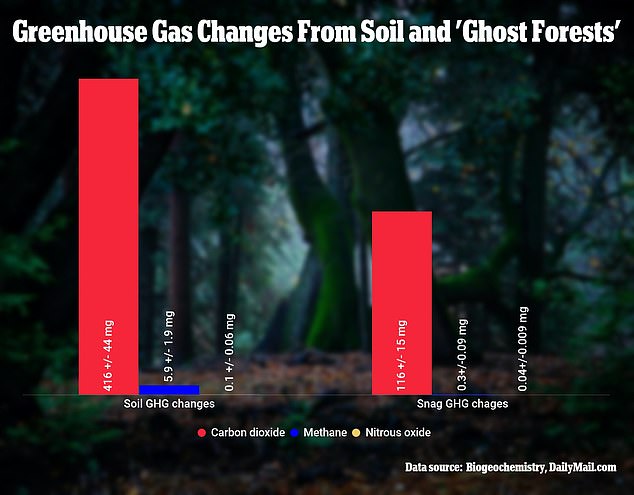
Ghost Tree 'Farts’: The Silent But Deadly Greenhouse Gas, Scientists Warn
Share
Scientists say ghost forests could pose an invisible threat to climate change.
Rising seas are poisoning trees along the Atlantic coast of the United States. And a new study suggests these ‘ghost trees’ are beginning to 'fart' carbon dioxide and methane.
All trees fart a little bit. In exchange for releasing small amounts of methane and other gases into the atmosphere, trees store a lot of carbon.
Standing dead trees, also called snags, have no leaves anymore, so they can't photosynthesize and absorb CO2. As a result, they can potentially increase carbon dioxide emissions by up to 25%.
Unlike live trees, snags don't move water and nutrients around for growth, so the gases they release are probably coming from decaying wood or diffusing up from the soil below.
In other words, ghost trees could be sucking greenhouse gases out of the ground and emitting them into the atmosphere.
"We think that they act as straws, but as a filtered straw," explains forestry scientist Marcelo Ardón from NC State.
"They change those gases, as the gases move through the snags."

The variety of CH4 sources and 'sinks' in upland and wetland forests. Red arrows are CH4 sources and blue arrows are 'sinks' remove CH4 from the environment. In ghost trees, there is no sink.
Researchers used portable gas analyzers to study emissions from soil and ghost trees in five regions of North Carolina dealing with severe saltwater intrusion.
For two summers, in 2018 and 2019, the team found the soil produced four times more greenhouse gas emissions than standing dead trees.
"Even though these standing dead trees are not emitting as much as the soils, they're still emitting something, and they definitely need to be accounted for," says environmental scientist Melinda Martinez from North Carolina State.
"Even the smallest fart counts."
Methane is released from live trees in tropical wetlands, where the soil is waterlogged, but carbon dioxide is released from dead trees in saltwater marshes as the main greenhouse gas.
This study found that the water conditions and salt levels in the marshes had a clear effect on the emissions from the soil. It was hard to say how these conditions affected ghost tree emissions.
In order to estimate ghost tree emissions and predict what might happen to these dead forests in the future, we need more research.
We need to know what effect ghost forests will have on local and global emissions as sea levels rise.
"The transition from forest to marsh from these disturbances is happening quickly, and it's leaving behind many dead trees," says Martinez.
"We expect these ghost forests will continue to expand as the climate changes."
Thanks for reading!
Are ghost tree farts a silent killer of the ozone layer?
Should they be stopped with extreme prejudice?
Let us know in the comments.
And if you’re feeling generous…
Share with an astro friend to spread ARSE and thrust Australia into the deep unknown…
#Space_Aus




